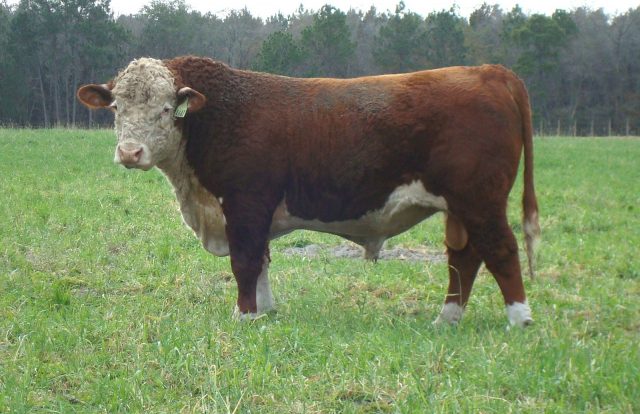Type the name of the breed you're looking for below
[wpdreams_ajaxsearchlite] Don't see the breed your're looking for? Click here and let us know!
Polled Hereford cattle
| Place of Origin | Great Britain |
| Origin | Polled Herefords represent the development of an idea - an idea spawned in the minds of a small number of Midwestern Hereford breeders in the late 1890s who realized that it was both possible and practical to develop "modern Herefords minus horns." These breeders were motivated by the promising prospect of developing Herefords with outstanding beef-producing characteristics, but with the added desirable trait of being naturally hornless. They planted the seed from which grew a new giant in the American and world beef cattle industry The Polled Hereford of today is the result - a modern, practical breed of cattle that has experienced widespread acceptance and desirability. Polled Herefords were developed from the horned Hereford breed which was founded in the mid-18th century by the farmers of Hereford County, England. Among the horned Herefords an occasional calf would be born which did not develop horns. This change from parents' characteristics is known as a "mutation." These cattle soon came to be called "polled," which means naturally hornless. Warren Gammon, a young Iowa Hereford breeder from Des Moines, originated Polled Herefords. He seized upon the idea of producing the hornless cattle after seeing some on exhibition at the Trans-Mississippi World Fair in Omaha, Nebraska, in 1898. Three years later, Gammon established the Polled Hereford breed registry with 11 head of naturally hornless whiteface cattle he had located and purchased. These Herefords were registered in the American Hereford Association, but were not identified as to their polled characteristic. Therefore, Gammon formed the American Polled Hereford Cattle Club to maintain a separate record of purebred Polled Hereford registrations. Thus, in 1901, the Polled Hereford breed came into being with 11 registrations on record. In 1907, the pioneer breeders of Polled Herefords incorporated their organization, with headquarters in the Gammon home in Des Moines. Gammon served as executive secretary until 1921. |
| Purpose | Meat |
| Appearance | Red with white head |
| Horns | Naturally polled (hornless) |
| Other Considerations | Eye cancer (ocular squamous cell carcinoma) occurs in Herefords in particular in countries with continued bright sunlight and those that prefer traits of low levels of red pigmentation around the eye. Studies have been made into eye cancer in Hereford cattle in the US and Canada, and lid and corneoscleral pigment were found to be heritable and likely to decrease the risk of cancer. Vaginal prolapse is considered a heritable problem in Hereford cattle, but it may also be influenced by nutrition. Another problem is exposed skin on the udder being of light pigmentation is vulnerable to sun burn. |



